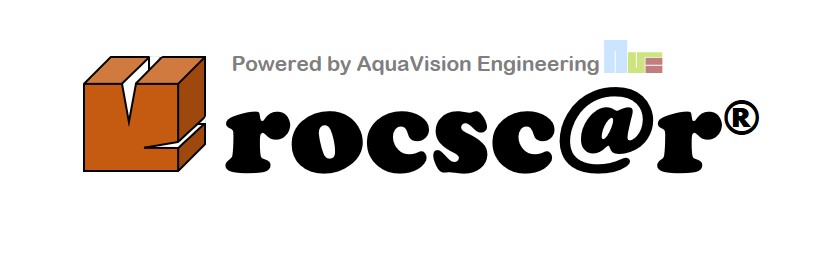
Background
The Quasi-Static Impulsion method (QSI) has been initially developed by Bollaert during his PhD at the Swiss Federal Institute of Technology in Lausanne (1998-2002) (Bollaert, 2002; Bollaert & Schleiss, 2005; Bollaert, 2006). The method determines potential detachment (“peeling off”) of a rock block from its mass, due to a quasi-steady (average) net uplift pressure that is generated by a deviation of the flow parallel to the boundary by a block that protrudes compared to the surrounding blocks.
In contrast with the DI method, the QSI method makes use of the local flow velocity Vlocal along the water-rock interface. This velocity is determined based on the velocity decay with depth of the jet diffusing through the plunge pool and on the radial velocity decay of the deviated wall jet extending radially outwards from the point of impingement. Also, the QSI method is valid along that part of the water-rock interface where the impinging jet has been transformed into a wall jet.
Based on laboratory experiments and literature feedback for different geometrical situations of rock blocks that are protruding, performed by different independent research investigations (Reinius (1986), Otto (1989), USBR (2007)), the flow deviations generated by protruding blocks have been transformed into time-averaged net uplift pressure coefficients.
Features
The QSI method implements the following series of submodels:
- free surface or pressurized jet falling through the air
- 2D diffusion of the jet through the pool depth
- 2D jet impingement and deflection at the water-rock interface
- formation and development of wall jets towards up-and downstream
- local deviation of wall jets at protruding rock blocks
- generation of lift and drag forces on protruding rock blocks


Aeras of application
The 2D_BASE version of the software is applicable to the following types of turbulent flow impacting the water-rock interface:
- vertically impinging jets
- obliquely impiniging jets
- circular and rectangular shaped jets
- nappe flows
- any other turbulent flows quasi-parallel to the interface
For practice, especially the scour results computed outside of the turbulent diffusive shear layer of the jet impacting the plunge pool are of importance, where the QSI method is able to predict the shape of the scour hole.
